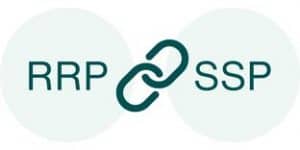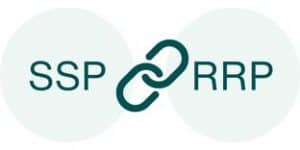Listening Therapies Tailored to Complete Client Care
Understanding the Safe and Sound Protocol, Rest and Restore Protocol, and Integrated Listening System.
Explore the unique benefits and integrative potential of each of Unyte Health’s music-based listening programs: Safe and Sound Protocol™ (SSP), Rest and Restore Protocol™ (RRP), and Integrated Listening System™ (ILS).
No matter which Unyte program you start with, add additional programs at a deep discount to create a robust toolkit of effective, non-invasive sound-based interventions.

Get trained for only $99 when you bundle with an SSP or RRP Annual Subscription. Or get started with just training for $199. Use code SUMMERSAVE at checkout. Interested in ILS? Save $100 with code SUMMERILS. Get started today →
What’s the Difference between Unyte Health Listening Programs?
Please note this content is best viewed on a tablet, desktop or laptop computer.
| Rest and Restore Protocol | Safe and Sound Protocol | Integrated Listening System | |
|---|---|---|---|
| Focus | Self-regulation (Connection to self) | Co-regulation (Connection with others) | Body Organization (Brain-body connection) |
| Think of it as... | A stealth meditation | Retune the nervous system | Exercise for the brain and body |
| Primary Use | Supports healing, restoration and homeostasis; subdiaphragmatic functions | Improves social engagement, sound sensitivities, and autonomic regulation | Improves brain-body organization for skill-building |
| Best Suited For | Lifespan care – pediatric to senior (age 2-100+) |
Lifespan care – pediatric to senior (age 2-100+) |
Lifespan care – pediatric to senior (age 2-100+) |
| Targeted Areas | Dorsal and ventral vagal pathways, visceral organs | Ventral vagal pathway, social engagement system (head and neck) | Cognition; visual, auditory, and vestibular systems |
| Mechanisms | Entrainment of homeostatic, endogenous biological rhythms | Stimulates the social engagement system through the auditory portal | Multisensory program for neural integration |
| May Support Clients With | Stress Fatigue Sleep Gut-related functions |
Social and sensory challenges Emotional and behavioral regulation |
Developmental and sensory-motor differences Neurological injury |
| Client Profiles | Disconnected from self, internalizing, somatic issues | Disconnected from others, externalizing, interoception challenges | Motivated but lacking integration of skill and body awareness |
| Delivery | 5 hours filtered music via MyUnyte app titrated over weeks or months, in a relaxed setting | 5 hours filtered music via MyUnyte app titrated over weeks or months, combined with co-regulation activities | 5 programs with filtered music plus bone conduction + movement via MyUnyte app, delivered over 4-6 months |
| Evidence | Pilot data and clinical trials in development | 10+ clinical trials in peer-reviewed journals | Strong testing results and case studies |
| Created By | Dr. Stephen Porges & Anthony Gorry | Dr. Stephen Porges | Co-created by Kate Minson and Randall Redfield in collaboration with Dr. Ron Minson, Ph.D |
Ready to explore which listening therapies are best for your clients?
Our experts can help you determine whether the Safe and Sound Protocol, Rest and Restore Protocol, or Integrated Listening System—or a combination—will best support your practice and your clients’ unique needs.
Combined Delivery of Unyte Listening Programs:
Accelerate Outcomes. Deepen Impact.
Accelerate Outcomes. Deepen Impact.
When delivered together, the Safe and Sound Protocol (SSP) and Rest and Restore Protocol (RRP) can support a broader range of client needs — faster. While each protocol is powerful on its own, their combined use creates a synergistic effect that helps:

Balance both social engagement and physiological recovery systems.

Support clients navigating a wide range of complex challenges, from fatigue and chronic pain, to emotional and mental challenges.

Provide flexibility by adjusting delivery based on how a client responds session-to-session.
Exploring Combined and Sequenced Delivery
These examples of combined and sequenced delivery illustrate how a flexible, responsive approach allows providers to meet clients where they are and keep them moving forward.

Combined Delivery
If a client appears withdrawn and disconnected after an RRP listening session, the provider can support them by integrating SSP and co-regulation at the end of the session and at home.

Combined Delivery
If the client appears activated and talkative after an SSP listening session, the provider can support them by reducing the number of SSP sessions, and by adding RRP and sensory supports.

Sequenced Delivery
If a client reports better sleep after RRP, but remains challenged with social communication, the provider can recommend starting the SSP.

Sequenced Delivery
If a client reports better relationships and communication after SSP, but is having difficulty with sleep, the provider can recommend starting RRP.
Combine the Power of SSP and RRP for $199/month
Get access to both the SSP and RRP — including training, support, and an annual subscription — for just $199/month. This bundled pricing is designed to help you bring nervous system regulation into your practice more affordably than ever before.
SSP and RRP: What’s the Difference?
Rebecca Knowles, Director of Research, Education, and Quality at Unyte Health, discusses the differences between the Safe and Sound Protocol and Rest and Restore Protocol, and how providers can begin to choose the right program, or sequence of programs, for their clients.
We’re here to help!
We’re here to help! Our consultants can help decide what is right for your practice and get you started.









 © 2025 Unyte Health US Inc.
© 2025 Unyte Health US Inc.